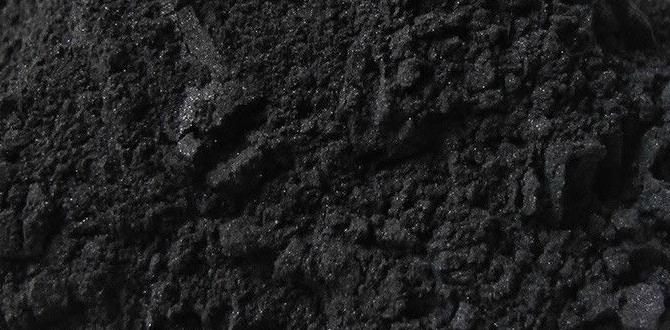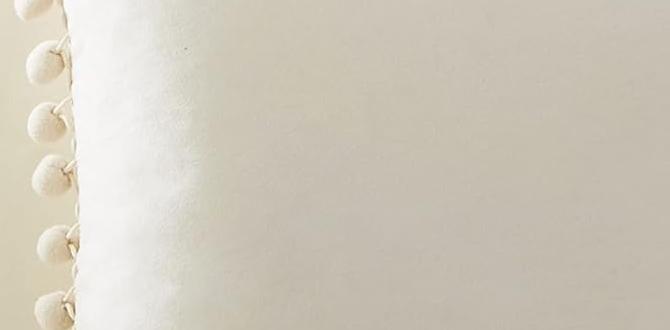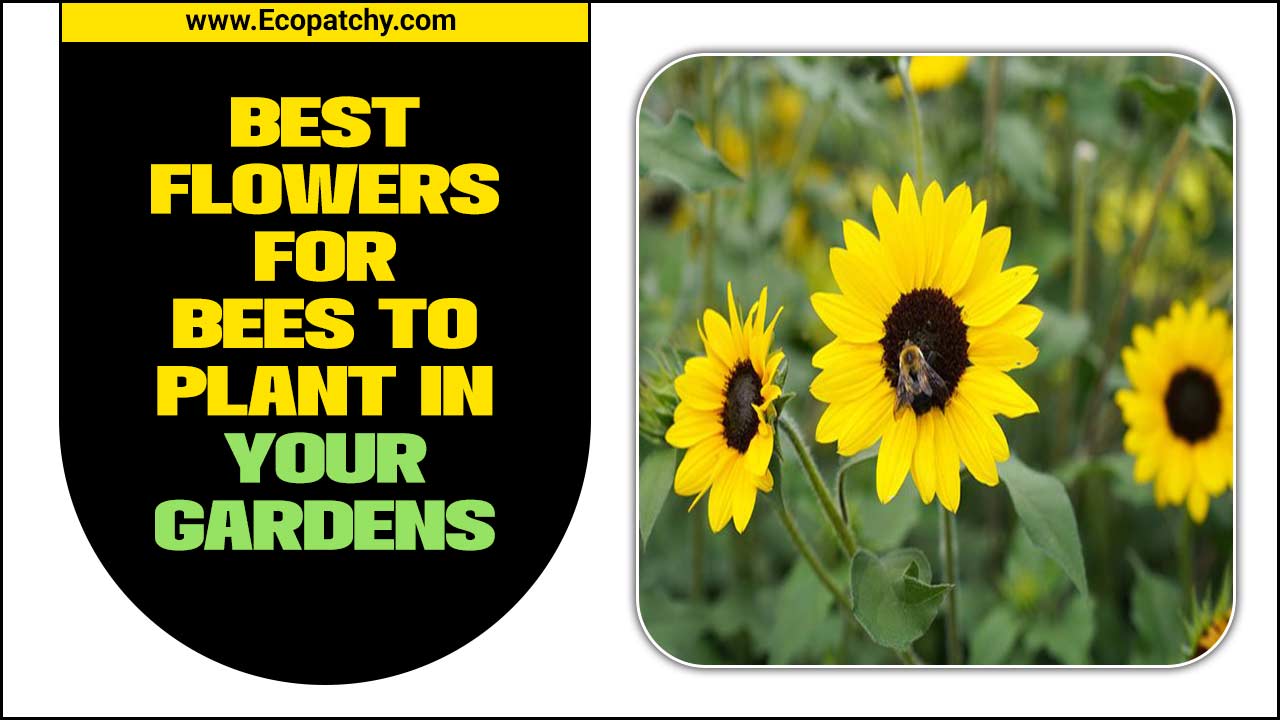Beginner indoor gardening is your key to fresh herbs and vibrant plants year-round, even with limited space! This guide offers simple, actionable steps to create your thriving indoor oasis, making plant care easy and rewarding for everyone.
Feeling a bit intimidated by the thought of starting an indoor garden? You’re not alone! Many people think growing plants inside requires a green thumb or a lot of space, but it’s really about understanding a few basic needs. It can feel frustrating when plants don’t thrive, but the good news is that indoor gardening for beginners is totally achievable. This guide will walk you through everything you need to know, step-by-step, to start your own beautiful, flourishing indoor garden. Get ready to bring a little bit of nature right into your home!
Choosing Your Indoor Garden’s Perfect Spot
The first step to a happy indoor garden is picking the right location. Most plants, just like us, have needs when it comes to sunlight and temperature. Think of it as finding the perfect spot in your home where your greenery can feel comfortable and thrive.
Sunlight: The Plant’s Best Friend
Sunlight is crucial for plants to make food through a process called photosynthesis. Different plants need different amounts of light. Some love a sunny windowsill, while others prefer gentler, indirect light.
- Bright, Direct Light: This is like a sunbath! South-facing windows usually offer the most intense light. Plants like succulents, cacti, and many flowering plants love this.
- Bright, Indirect Light: This is light that’s bright but not directly shining on the plant for long periods. East-facing windows or a spot a few feet away from a south-facing window works well. Many houseplants, like ferns and pothos, prefer this.
- Low Light: Some plants are happy with less light. North-facing windows or rooms with little natural light are suitable for these resilient plants, such as snake plants or ZZ plants.
To get a better understanding of your home’s light conditions, you can use a light meter app on your smartphone! This helps you assess exactly how much sun a particular spot receives throughout the day.
Temperature and Humidity: Creating a Cozy Climate
Most common houseplants are happy with the same temperatures we enjoy indoors, generally between 65-75°F (18-24°C). Avoid placing plants near drafty windows, heating vents, or air conditioners, as sudden temperature changes can stress them out.
Humidity can be a bit trickier, especially in dry climates or during winter when heating systems are running. Many popular houseplants, often tropical in origin, appreciate higher humidity. You can increase humidity by:
- Grouping plants together: Plants release moisture through their leaves, creating a more humid microclimate when grouped.
- Using a pebble tray: Place your pot on a tray filled with pebbles and water. As the water evaporates, it increases humidity around the plant. Ensure the pot isn’t sitting directly in the water.
- Misting: Lightly misting your plants occasionally can help, but this is a temporary fix and can sometimes encourage fungal issues if done improperly.
- Using a humidifier: For a more consistent humidity boost, a small room humidifier is a great investment.
Essential Tools for Your Indoor Gardening Journey
You don’t need a lot of fancy equipment to start your indoor garden. A few basic tools will make caring for your plants much easier and more enjoyable. Think of these as your gardening toolkit.
Here are some must-have items:
- Gardening Trowel: A small hand trowel is perfect for potting, repotting, and digging small holes.
- Watering Can: Choose one with a long, narrow spout for precise watering directly at the soil base, avoiding wetting the leaves.
- Pruning Shears or Scissors: For trimming dead leaves, shaping plants, or taking cuttings.
- Gloves: To keep your hands clean and protect them from sap or thorns.
- Spray Bottle: Useful for misting or applying natural pest deterrents.
- Potting Soil: A good quality, well-draining potting mix is essential. Avoid using garden soil, as it can become too compacted in pots.
- Pots with Drainage Holes: This is non-negotiable! Drainage holes prevent water from sitting at the bottom of the pot, which can lead to root rot.
For a more in-depth look at gardening tools, the Royal Horticultural Society (RHS) offers a comprehensive guide to essential gardening tools, many of which are adaptable for indoor use.
Selecting the Best Plants for Beginners
Starting with the right plants is key to building your confidence. Some plants are more forgiving and resilient, making them perfect for those just starting out. These “beginner-friendly” plants are less fussy about watering and light conditions.
Top Picks for Budding Indoor Gardeners
Here are some fantastic choices that are known for their hardiness and ease of care:
- Snake Plant (Sansevieria): Incredibly tough and tolerant of low light and infrequent watering. They also help purify the air!
- ZZ Plant (Zamioculcas zamiifolia): Another champion of neglect. It can handle low light and dry conditions for extended periods. Its glossy leaves look sophisticated.
- Pothos (Epipremnum aureum): Often called “devil’s ivy” because it’s so hard to kill. It thrives in bright, indirect light but can tolerate lower light. It also trails beautifully!
- Spider Plant (Chlorophytum comosum): Easy to care for and produces “spiderettes” (baby plants) that you can easily propagate. Prefers bright, indirect light.
- Peace Lily (Spathiphyllum): Elegant with beautiful white blooms, it’s quite communicative. It will visibly droop when it needs water, making it easy to know when to water. Prefers medium to low indirect light.
- Herbs like Mint, Basil, and Chives: Many culinary herbs are surprisingly easy to grow indoors, especially on a sunny windowsill. They offer the bonus of fresh ingredients for your kitchen!
Starting From Seeds vs. Seedlings
For beginners, starting with established seedlings or small plants from a nursery is often the easiest way to go. They’ve already passed their most delicate stage and are more likely to adapt to your home environment.
However, starting from seeds can be incredibly rewarding! Here’s a quick comparison:
| Method | Pros | Cons | Best For |
|---|---|---|---|
| Seedlings/Young Plants | Quicker results, easier to manage, already past the most vulnerable stage. | Limited variety sometimes, more expensive upfront. | Absolute beginners, those looking for immediate greenery/results. |
| Seeds | Vastly more variety, very inexpensive, rewarding to watch grow from the start. | Takes longer, requires more attention to germination and early care, higher chance of failure for complete novices. | Patient gardeners, those wanting specific varieties, budget-conscious growers. |
If you decide to try seeds, look for plants specifically recommended for indoor growing or container gardening. Always follow the seed packet instructions carefully regarding planting depth, spacing, and germination conditions.
The Art of Watering and Feeding Your Indoor Plants
One of the most common challenges for new gardeners is getting watering right. It’s a delicate balance: too much or too little can be a problem.
Watering Wisely
The golden rule of watering is to check the soil moisture before you water. Stick your finger about an inch or two into the soil. If it feels dry, it’s time to water. If it’s still moist, wait a few more days.
- Water Thoroughly: When you do water, soak the soil completely until water runs out of the drainage holes. This ensures all the roots get moisture. Discard any excess water that collects in the saucer after about 30 minutes.
- Water Quality: Most tap water is fine, but if your water is very hard (high in minerals), it can leave white deposits on the soil or leaves over time. Letting tap water sit out overnight can help some of the chlorine dissipate. Alternatively, rainwater or distilled water can be used.
- Season Matters: Plants generally need less water in the fall and winter when growth slows down.
Overwatering is a leading cause of houseplant death, so it’s always better to err on the side of underwatering and check the soil regularly.
Feeding Your Green Friends (Fertilizing)
Indoor plants rely on you to provide the nutrients they would naturally find in the soil outdoors. Potting soil contains nutrients, but they get used up over time. Fertilizing helps replenish these nutrients.
- When to Fertilize: The best time to fertilize is during the plant’s active growing season, which is typically spring and summer. Most plants don’t need fertilizer in the fall and winter.
- What to Use: Use a balanced, water-soluble liquid fertilizer specifically designed for houseplants. These are usually labeled with three numbers (e.g., 10-10-10), representing nitrogen, phosphorus, and potassium.
- How Much: It’s crucial to dilute fertilizer according to the package instructions. Many beginners make the mistake of using too much, which can “burn” the plant’s roots. It’s often best to fertilize at half or even quarter strength.
- Frequency: Once a month during the growing season is usually sufficient unless the product label suggests otherwise.
Remember, a plant that is stressed from improper watering or light conditions won’t benefit from fertilizer. Address the basics first!
Understanding Soil and Potting Essentials
The right potting mix and the right pot are foundational to a healthy indoor garden. They provide anchorage for roots, retain moisture, and allow for aeration.
The Importance of Potting Mix
Don’t use soil from your garden for indoor plants! Garden soil is dense and can compact easily in a pot, hindering drainage and airflow, which can suffocate plant roots. Always use a good quality potting mix.
- What to look for: A good potting mix is usually a blend of peat moss, coco coir, perlite, and/or vermiculite. These ingredients help retain moisture while also ensuring good drainage and aeration.
- Specialty Mixes: You can find specialized mixes for succulents and cacti (which drain even faster) or for orchids. For most common houseplants, a standard potting mix is perfect.
- DIY Mix: If you’re feeling adventurous, you can create your own potting mix by combining roughly 2 parts peat moss or coco coir, 1 part perlite, and 1 part compost.
Repotting your plants every 1-2 years, or when they become root-bound, is also a good practice to refresh the soil and give the roots more space to grow. The Plant Care website has excellent visual guides on how to tell if your plant needs repotting.
Choosing the Right Pot
As mentioned, drainage holes are essential. Beyond that, consider the material and size of the pot.
- Material: Terracotta pots are porous and allow soil to dry out faster, which is great for plants that dislike soggy roots. Plastic or glazed ceramic pots retain moisture longer.
- Size: Start with a pot that is only slightly larger (about 1-2 inches wider in diameter) than the plant’s current root ball. A pot that is too large can hold excess moisture, leading to overwatering and root rot.
- Drainage Tray: Always use a saucer or decorative pot cover to catch excess water, protecting your furniture.
Common Indoor Gardening Challenges and Solutions
Even with the best intentions, you might encounter a few hiccups. Don’t get discouraged! Most common problems have simple solutions.
Pests: The Tiny Invaders
Indoor plants can sometimes attract common houseplant pests like spider mites, mealybugs, and fungus gnats. Catching them early is key.
- Identification: Look for tiny webs, white cottony masses, or small gnats flying around the soil. Regularly inspect your plants, especially the undersides of leaves.
- Treatment:
- Manual Removal: For small infestations, you can often wipe pests off with a damp cloth or cotton swab dipped in rubbing alcohol.
- Insecticidal Soap or Neem Oil: These are relatively safe and effective options for controlling pests. Follow product instructions carefully.
- Fungus Gnats: These are often a sign of overwatering. Let the soil dry out more between waterings. Sticky traps can also help catch adult gnats.
Prevention is better than cure! Keep your plants healthy, remove dead leaves promptly, and quarantine new plants for a few weeks before introducing them to your existing collection.
Yellowing Leaves
Yellow leaves can be a sign of several issues, but most commonly, it’s related to watering.
- Overwatering: This is the most frequent culprit. The roots can’t breathe and begin to rot. Check the soil moisture; if it’s consistently wet, reduce watering.
- Underwatering: If the leaves are dry, crispy, and the soil is parched, your plant is thirsty. Water thoroughly.
- Nutrient Deficiency: If watering seems correct, but leaves are yellowing (especially older leaves), the plant might need feeding. Fertilize during the growing season.
- Lack of Light: If a plant isn’t getting enough light, it may start to yellow as it can’t photosynthesize effectively.
Wilting
Wilting is the plant’s way of saying it’s stressed. It can be due to both too much and too little water.
- Underwatering: If the soil is dry and the plant looks droopy, give it a good watering. It should perk up within a few hours.
- Overwatering: Ironically, overwatering can also cause wilting because waterlogged roots can’t absorb water properly. Check the soil; if it’s wet, allow it to dry out more before watering again. Ensure good drainage.
- Environmental Stress: Sudden temperature changes or drafts can also cause wilting. Move the plant to a more stable environment.
Bringing the Outdoors In: Growing Herbs and Edibles
One of the most rewarding aspects of indoor gardening is being able to grow your own fresh herbs and even some small vegetables right in your kitchen or living room!
Kitchen Herbs: Flavor at Your Fingertips
Many popular culinary herbs thrive indoors, especially on a sunny windowsill. They not only provide fresh flavor for your cooking but also add a lovely scent to your home.
- Basil: Needs lots of light and consistent moisture. Pinch back the tops to encourage bushier growth.
- Mint: Very easy to grow, but can spread aggressively. Best kept in its own pot. Prefers bright, indirect light and moist soil.
- Chives: Hardy and forgiving. Grow well in bright light and prefer slightly moist soil.
- Parsley: Needs bright light and consistent moisture.
- Rosemary and Thyme: These Mediterranean herbs prefer a lot of bright light and well-draining soil. They dislike overwatering, so let the soil dry out a bit between waterings.
Start with small plants from a nursery or, if you’re feeling adventurous, try growing them from seeds. Place them in pots with good drainage on your sunniest windowsill and water when the top inch of soil feels dry.
Microgreens and Small Vegetables
If you have a bit more space and light, you can even try growing microgreens or small vegetables like cherry tomatoes or small peppers indoors.
- Microgreens: These are seedlings harvested just after the first true leaves appear. They grow quickly and are packed with nutrients. You can grow them in shallow trays with potting mix in a bright spot.
- Dwarf Varieties: Look for “dwarf” or “container” varieties of tomatoes, peppers, or even strawberries. These are bred to remain smaller and more manageable. They will likely need a very sunny spot and potentially some support as they grow.
Growing edibles indoors connects you more intimately with your food and adds a wonderful touch of freshness to your home. For more on growing food indoors, the Old Farmer’s Almanac provides extensive advice on various crops.</p





